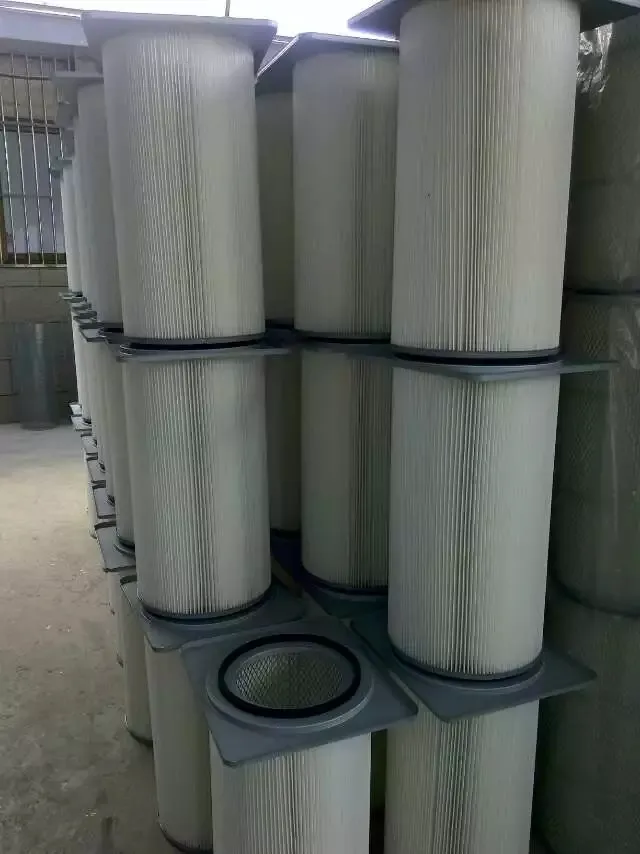 Tel:
+8615930870079
Tel:
+8615930870079
Jul . 26, 2024 08:13 Back to list
Understanding the Importance of Antistatic Filter Elements in Industrial Applications and Safety Solutions
Understanding Antistatic Filter Elements Importance and Applications
In various industrial and technological sectors, controlling static electricity is crucial for maintaining product integrity and safety. This is where antistatic filter elements play a vital role. These specialized components are designed to prevent the buildup of static charge in filtration systems, ensuring that processes remain efficient, and products remain uncontaminated by particulate matter.
What are Antistatic Filter Elements?
Antistatic filter elements are filtration units with additives or materials that minimize static electricity buildup. They are typically used in environments where static discharge can lead to significant risks, such as explosions, equipment damage, or contamination of sensitive products. By incorporating substances with conductive properties or utilizing specific manufacturing techniques, these filter elements can dissipate static charges safely and effectively.
Importance of Antistatic Properties
The significance of antistatic properties cannot be overstated. In industries such as pharmaceuticals, food processing, electronics, and chemical manufacturing, the presence of static electricity can pose severe problems. For instance, in the electronics industry, static discharge can destroy delicate components. In pharmaceuticals, static can cause powders to clump together, resulting in inconsistent dosages in medications. Therefore, utilizing antistatic filter elements ensures that static charges do not accumulate, thereby safeguarding both products and processes.
Materials and Construction
Antistatic filter elements can be made from various materials, including synthetic fibers, woven textiles, and other engineered materials that are infused with antistatic agents. These filters are typically designed to allow airflow while capturing particulate matter, allergens, and other contaminants. The specific configuration and pore size will depend on the intended application, ensuring optimal performance without compromising on antistatic properties.
The manufacturing process of these filter elements often involves the integration of conductive materials that help in electrostatic dissipation. For example, some filters are produced using a blend of regular filter media with carbon or metal fibers, which help create a pathway for static charges to be released safely into the environment.
antistatic filter element

Applications of Antistatic Filter Elements
1. Electronics Manufacturing In the production of microchips and circuit boards, antistatic filters are essential in cleanrooms to protect sensitive components from electrostatic damage.
2. Pharmaceutical Industry In environments where powders and granules are handled, the use of antistatic filter elements helps to prevent static-induced clumping, ensuring consistent and reliable production processes.
3. Food Processing Static can cause contamination in food products, particularly in powder forms like flour and sugar. Antistatic filters can help maintain hygiene standards by preventing static-related issues.
4. Chemical Plants Chemical reactions can sometimes result in explosive scenarios due to static electricity. Antistatic filters are used in various stages of production to manage these risks effectively.
5. Automotive Industries During the manufacturing of vehicles, static discharge can affect sensitive electronic systems. Antistatic filters help in maintaining a stable and safe manufacturing environment.
Conclusion
Antistatic filter elements are a critical component in modern manufacturing and processing industries. Their ability to control static electricity not only enhances product quality but also ensures the safety of operations. As industries continue to evolve, the demand for effective antistatic solutions will only grow, making these filter elements an integral part of filtration technology. By understanding their importance, industries can make informed choices that safeguard their processes and improve overall productivity.
-
Types and Applications of Air Filtration CartridgesNewsJul.28,2025
-
The Role of Gas Turbine FiltersNewsJul.28,2025
-
Mastering Air Filter Cartridge UseNewsJul.28,2025
-
Advanced Turbine Filters for Modern Gas TurbinesNewsJul.28,2025
-
Cellulose Air Filter Cartridge Advantages in Dust FiltrationNewsJul.28,2025
-
Cellulose Filters for Air Particle ReductionNewsJul.28,2025

 Email:
Email:





